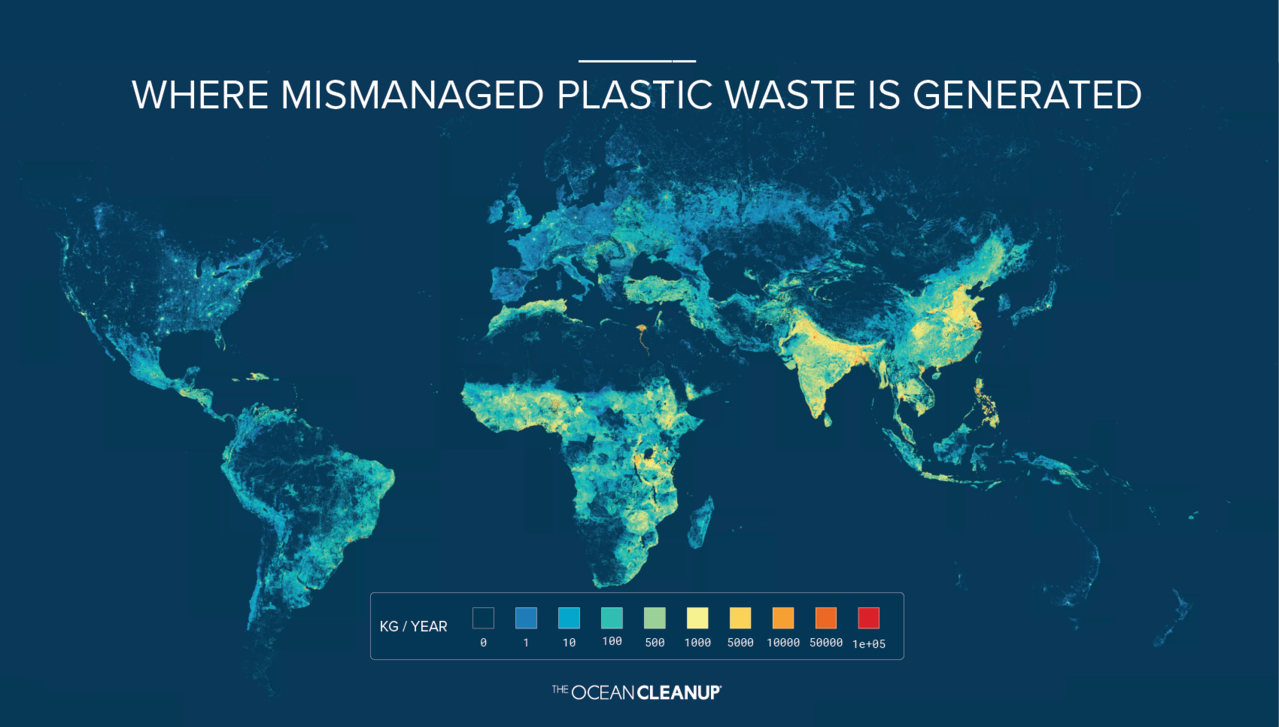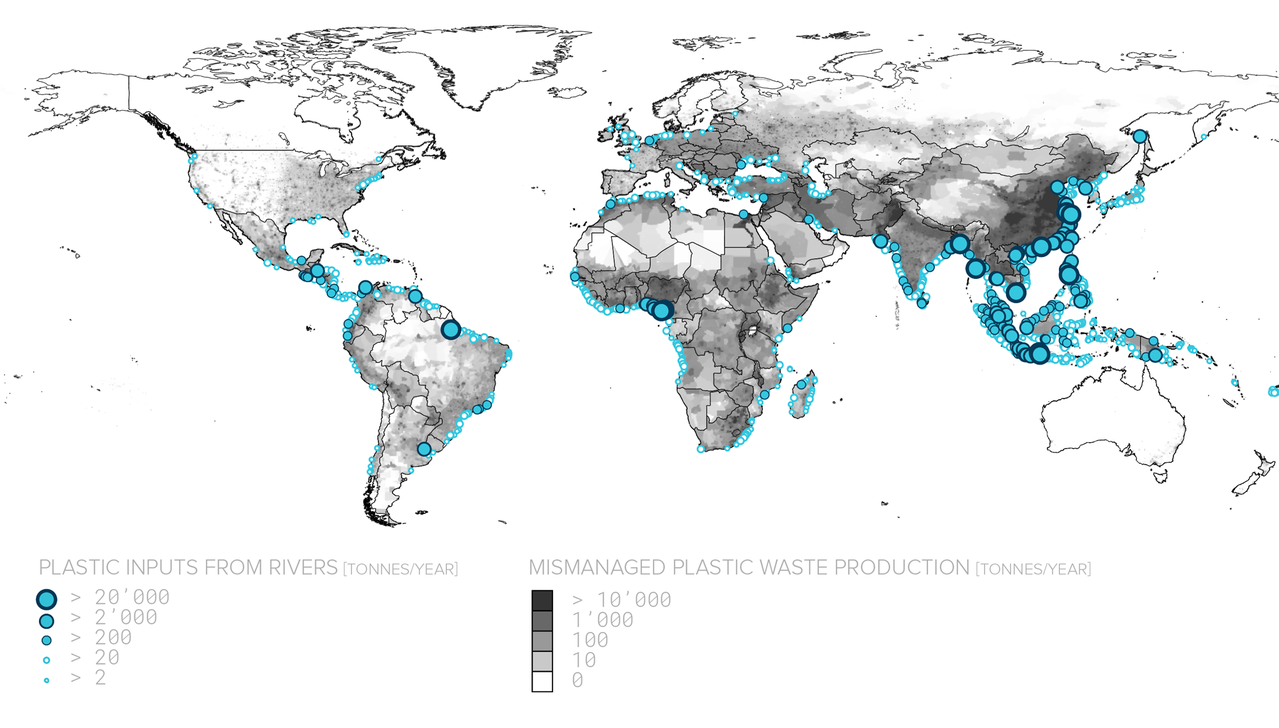Estimate of plastic waste from rivers into the world’s oceans
Plastic Ethics via The Ocean Cleanup Project and Nature Communications
Rivers annually emit between 1.15 and 2.41 million metric tons of plastic to the oceans.
Plastics in the marine environment is one of the major concern because of their persistence at sea, and adverse consequences to marine life and potentially human health.
The interactive map show the results of a global numerical model that predicts inputs of plastics from rivers into the marine environment.
The map also depicts the data used by the model such as mismanaged plastic waste production on land, river catchment hydrology and location of dams and man-made barriers worldwide.
This shows how much plastic how much of plastic has entered the ocean since you started looking at this page
For this study, a team lead by The Ocean Cleanup researcher Laurent Lebreton created a model from the combined global geospatial information on: population density, waste management, topography, hydrography and the locations of dams. After calibrating the model against field measurements of plastic flows from various rivers across the world, it was used to obtain a global picture of the annual river plastic emissions into the oceans.
Of the 40,760 ocean-bound rivers studied, just 20 are responsible for two-thirds of the global plastic input. In total, between 1.15 and 2.41 million metric tons of plastic are deposited into the oceans by rivers.
The model also shows that plastic input from rivers is highly correlated with drainage of debris from the river banks and creeks leading into main waterways, and that this river-to-ocean input therefore varies per season. Worldwide, three quarters of the plastic released annually enters the oceans between May and October.
The findings were published in Nature communications is open access and can be found on the journal’s: https://www.researchgate.net/publication/317398386_River_plastic_emissions_to_the_world's_oceans
They state « Implementing mitigation strategies requires an understanding and quantification of marine plastic sources, taking spatial and temporal variability into account. Here we present a global model of plastic inputs from rivers into oceans based on waste management, population density and hydrological information. Our model is calibrated against measurements available in the literature. We estimate that between 1.15 and 2.41 million tonnes of plastic waste currently enters the ocean every year from rivers, with over 74% of emissions occurring between May and October. The top 20 polluting rivers, mostly located in Asia, account for 67% of the global total. The findings of this study provide baseline data for ocean plastic mass balance exercises, and assist in prioritizing future plastic debris monitoring and mitigation strategies. »
Boyan Slat, Founder and CEO of The Ocean Cleanup stated: “We’re pleased to see how many initiatives have been taken in the past few years to raise awareness of the ocean pollution problem. However, for our work in the deep ocean to succeed in the long run, it’s crucial that governments and other organizations speed up their efforts to mitigate the sources of the problem we aim to resolve. The results of this latest study can assist with those efforts.”
Table 1: Top 20 polluting rivers as predicted by the global river plastic inputs models: https://www.nature.com/articles/ncomms15611/tables/1




